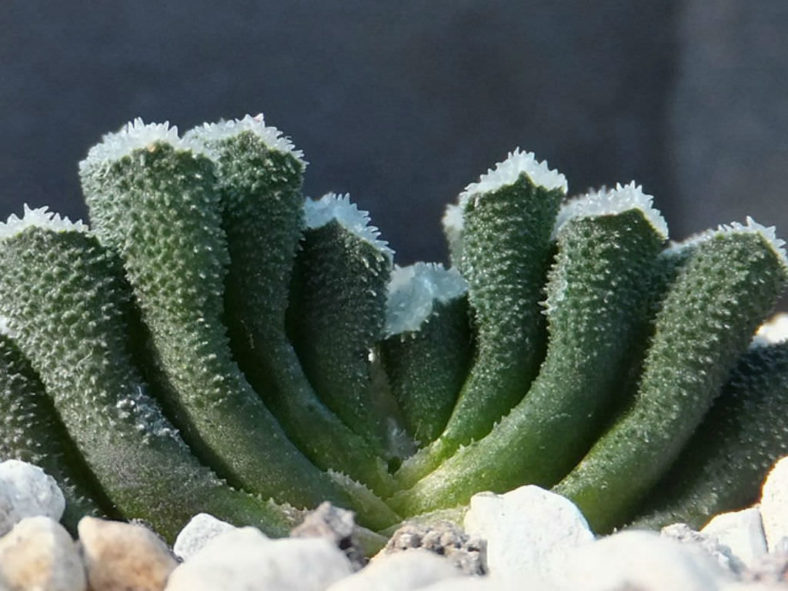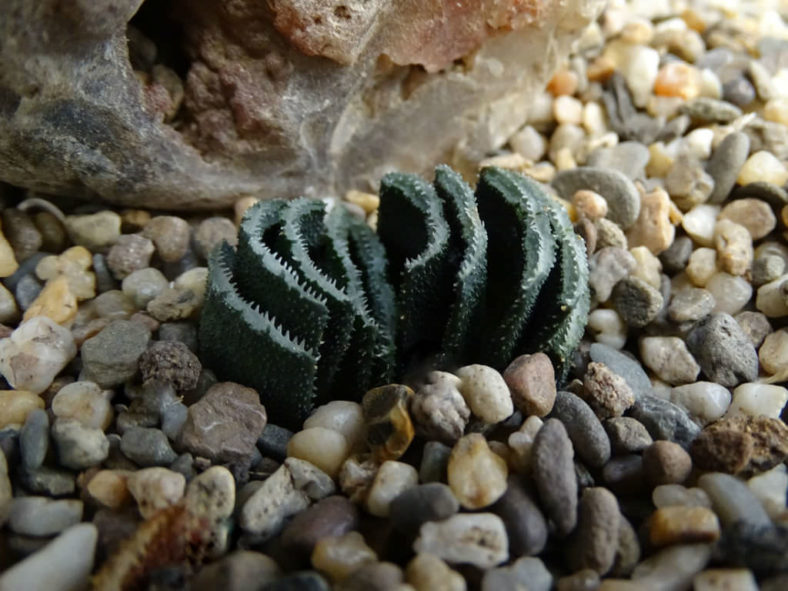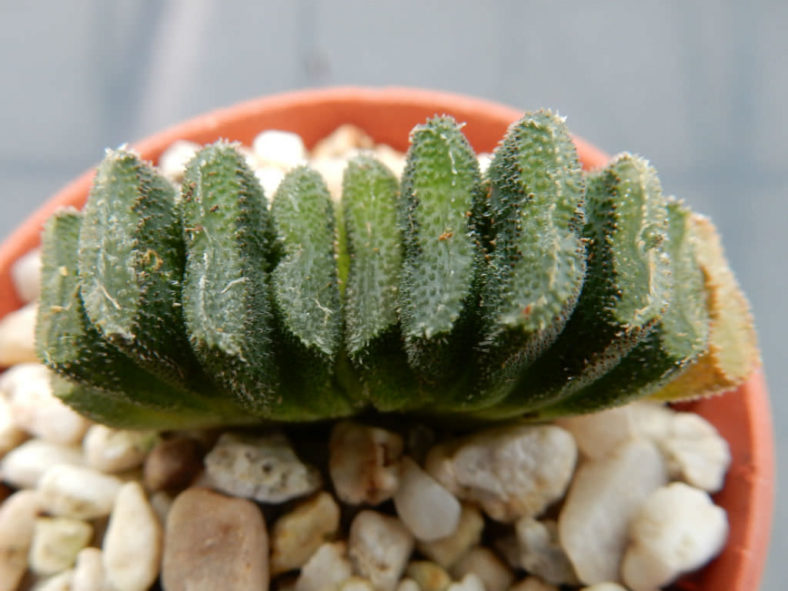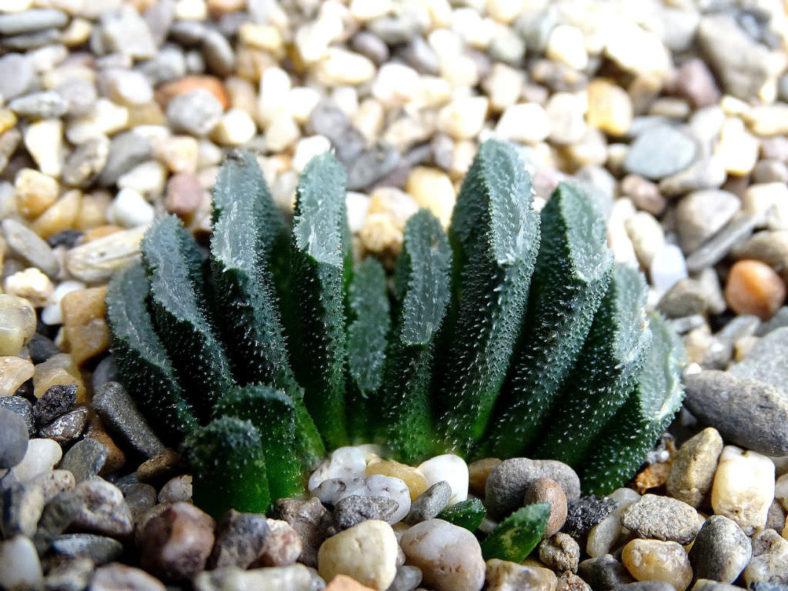Scientific Name
Haworthia truncata var. minor Breuer
Accepted Scientific Name
Haworthia truncata Schönland
Synonym(s)
Haworthia papillaris
Scientific Classification
Family: Asphodelaceae
Subfamily: Asphodeloideae
Tribe: Aloeae
Genus: Haworthia
Etymology
The varietal epithet "minor" derives from a Latin word meaning "lesser, inferior, smaller" and refers to the smaller size of this form compared to the typical form.
Origin
Haworthia truncata var. minor is not accepted as a separate variety and is treated as a synonym of Haworthia truncata. It is a dwarf form found in a small area between Kammanassie Dam and Dysseldorp in the Western Cape province of South Africa.
Description
Haworthia truncata var. minor is a small succulent with gray or gray-green leaves with a nearly rectangular cross-section, rough warty surfaces, and a usually hairy tip. It slowly produces offsets, forming a small clump with age. The leaves are arranged in 2 opposite rows and are much smaller than the typical form.
The small, white flowers appear on long, slender stems, mainly in late spring.

How to Grow and Care for Haworthia truncata var. minor
Light: Although some species can grow in full sun, most Haworthias are adapted to thrive in partial shade. Place the potted H. truncata var. minor in a bright area with some protection from the hottest rays of the day.
Soil: All Haworthias do not like their roots to remain wet for prolonged periods, so their potting soil should be well-drained. Use a commercial succulent potting mix, or make your own.
Hardiness: Haworthias like warmer temperatures in the summer but cool in the winter. However, they do not like being too cold. H. truncata var. minor can withstand temperatures as low as 30 to 50 °F (-1.1 to 10 °C), USDA hardiness zones 10a to 11b.
Watering: In spring and fall, when the growth is most active, water Haworthias thoroughly, then wait until the top of the soil dries out before watering again. Water your plants less during the winter when their growth slows down significantly. During the hottest summer months, when Haworthias are mostly dormant, water it just enough to keep the leaves from shriveling.
Fertilizing: Haworthias do not require much fertilizer, but fertilizing is a good idea for optimum growth. Feed only with a dilute fertilizer and only during the active growing season.
Repotting: These succulents are generally slow-growing and can stay in the same pot for years. However, for best health, H. truncata var. minor should be repotted into fresh soil every two to three years.
Propagation: Vegetative propagation, especially by offsets, is the quickest and most common method of propagating Haworthias. They can also be propagated by leaves and seeds. Remove the offsets when they have started developing their own roots. Sow seeds in spring or fall in a well-draining soil mix.
Learn more at How to Grow and Care for Haworthia.
Toxicity of Haworthia truncata var. minor
Haworthia species are generally non-toxic to humans and animals.
Links
- Back to genus Haworthia
- Succupedia: Browse succulents by Scientific Name, Common Name, Genus, Family, USDA Hardiness Zone, Origin, or cacti by Genus
Photo Gallery
Click on a photo to see a larger version.


